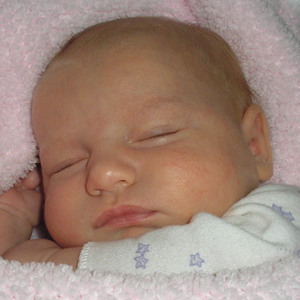Don’t be surprised if your beautiful newborn baby has developed pimples also known as baby acne when they are born or within the first few weeks of birth. It is very common to see pimples on your newborn baby and it is completely harmless. There are three types of baby acne: neonatal acne, milia, and infantile acne.
If you notice your newborn baby with little red pimples, or whiteheads on the cheeks, chin, forehead or back, this baby acne is commonly known as neonatal acne. There are hormones in the womb that occurs during pregnancy, which are transferred to the newborn baby through the placenta that causes the neonatal acne. Boys are more likely to get baby acne than girls. There is no treatment for neonatal acne and it will clear up on its own. If you see your newborn baby crying or fussing, the baby acne may start to look worse. Your newborn baby can have neonatal acne on their skin for a few weeks or it can even last several months.
According to the Mayo Clinic, if you are concerned about your baby’s complexion or it doesn’t clear up within three month, you should consult your baby’s doctor. To treat your baby acne, you should always wash your newborn baby’s face with warm water two or three times a day. You should only pat your newborn baby’s face dry, do not rub. Never try to squeeze the baby acne or you can cause more irritation, an infection, and even scarring.
Infantile acne is another form of pimples that is very similar to neonatal acne, but doesn’t develop until three months of age or even later. Lingering hormones passed on from the mother mainly causes infantile acne. You may see your baby develop yellow papules, comedones, or pustules that develop on the nose and cheeks. Infantile acne should be treated the same as the treatment of the neonatal acne by washing your newborn baby’s face with warm water two or three times a day, pat dry, and do not try to squeeze the infantile acne. Infantile acne will last until your baby is twelve months of age, but in some cases, it can last up to three years.
Milia is another form of baby acne that is rarely seen at birth. According to Webmd, one in two newborns will develop milia. You will notice tiny white bumps on your newborn babies cheeks, nose, and chin. A newborn baby can develop milia when dead skin causes blockage of the oil glands near the surface of your baby’s skin. According to Women’s Healthcare Topics, milia is often occurs with the warming of the baby by an incubator, occlusive dressings, clothing, or fever. There is no need for treatment for baby milia and the bumps will disappear as the baby’s glands begin to open up and the dead skin is sloughed off and the bumps will disappears. You can watch a slideshow from Web MD on simple tips to keep your baby’s skin healthy.
Sources and Resources:
http://www.mayoclinic.com/health/baby-acne/DS01060
http://www.womenshealthcaretopics.com/baby_acne.htm
http://children.webmd.com/slideshow-baby-skin-care
http://www.webmd.com/skin-problems-and-treatments/toc-image-picture-of-white-bumps-milia
http://skin-care.health-cares.net/blackheads.php
http://www.nlm.nih.gov/medlineplus/ency/article/003234.htm
